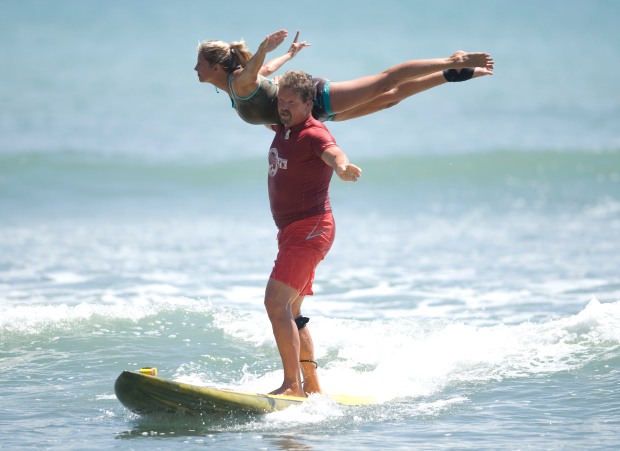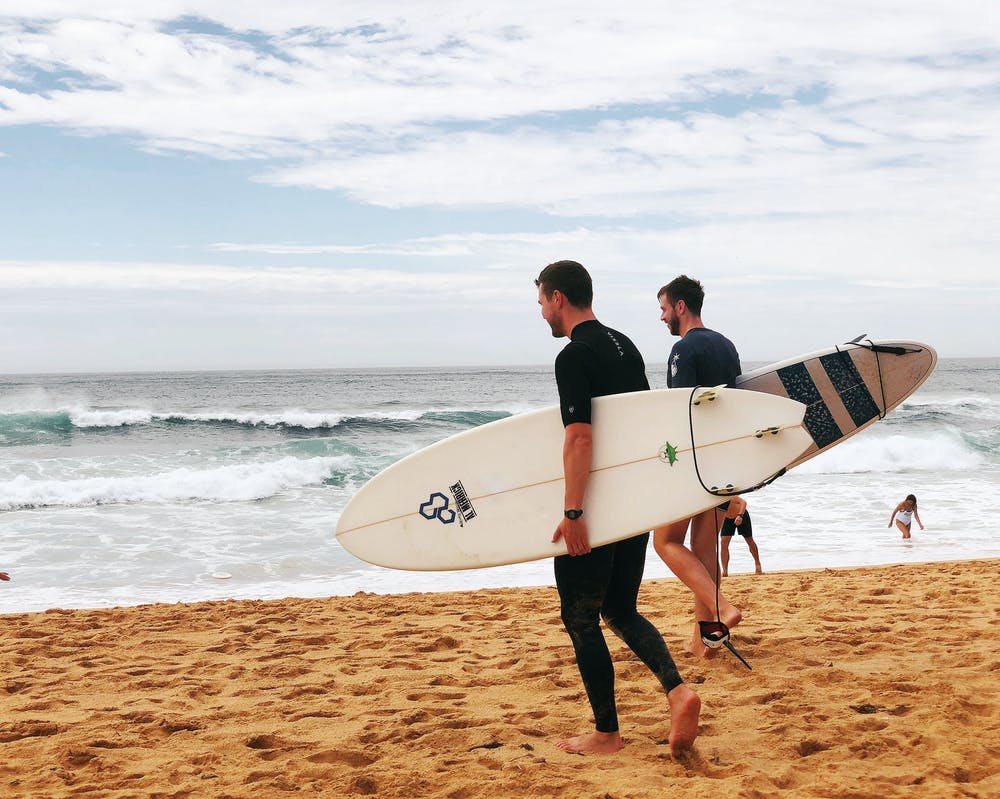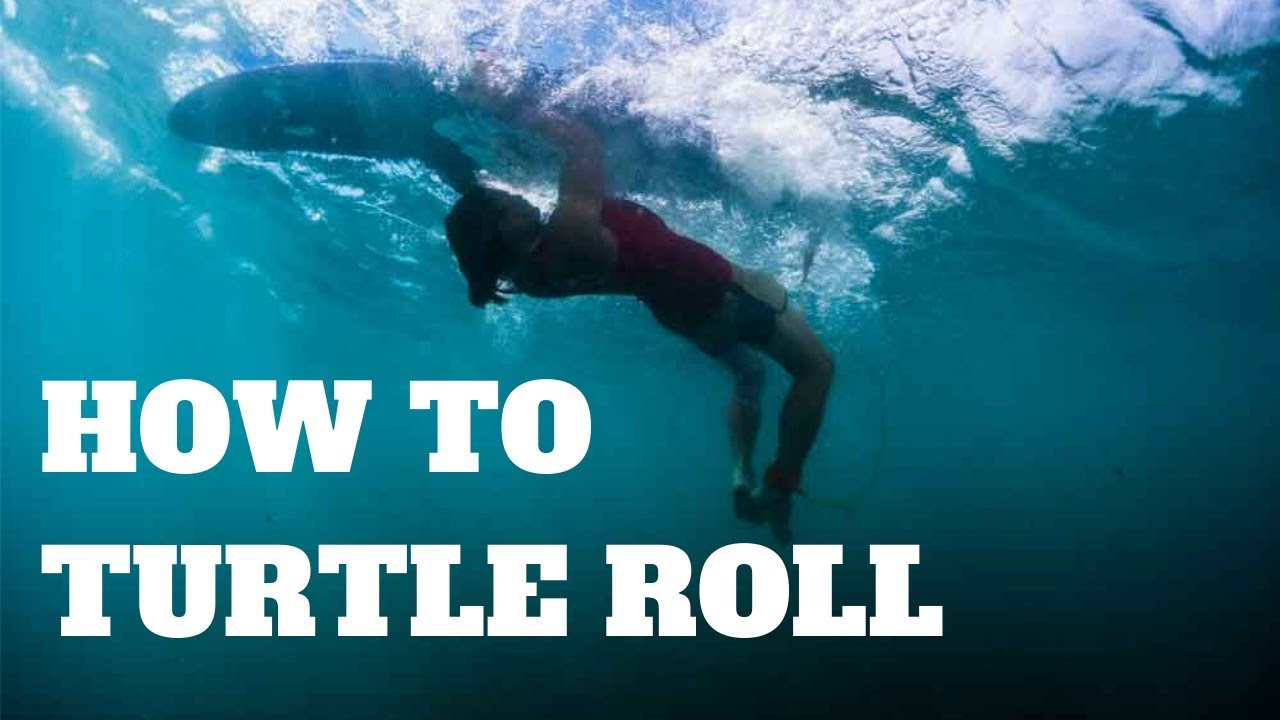Tandem surfing is a captivating water sport that allows two individuals to experience the thrill of riding waves together. It demands coordination, balance, and effective communication between the surfers, as they navigate the dynamic ocean environment as a team.
Whether you are a seasoned surfer seeking a new challenge or a beginner eager to explore the world of wave riding, tandem surfing offers a unique and exhilarating experience. This guide will delve into the essential steps and considerations for tandem surfing, enabling you to embark on this adventure confidently and excitedly.
Table of Contents
Feature of the technique

Tandem surfing is a thrilling water sport that involves two people surfing on the same board. It requires coordination, balance, and communication between the two surfers. Here’s a step-by-step guide on how to tandem surf:
- Choose the right equipment: Select a wide, stable, and long surfboard to accommodate two people comfortably. A longboard or a specialized tandem surfboard is ideal for tandem surfing.
- Find a suitable location: Look for a surf spot with small to medium-sized waves suitable for tandem surfing. Ensure the water is clear of obstacles and other surfers to avoid accidents.
- Prepare yourselves: Wear appropriate swimwear and attach the surfboard’s leash to both surfers’ ankles to prevent the board from drifting away. Apply sunscreen to protect your skin from the sun.
- Positioning: Start by lying on the board, side by side, with your heads towards the front of the board (nose). The person at the back will be responsible for steering, while the person at the front will assist with balance and stability.
- Paddling: Use your arms to paddle together, coordinating your movements to propel the board forward. Work in sync to generate enough speed to catch a wave.
- Catching a wave: Spot a suitable wave and communicate with each other to time your paddle. As the wave approaches, paddle powerfully to match its speed. The person at the back can use their feet to kick for an extra push.
- Balance and coordination: Once you’ve caught the wave, the front surfer should maintain a low center of gravity and use their arms for balance. The back surfer should use their feet and body movements to control the board’s direction.
- Communication: Effective communication is crucial during tandem surfing. Use verbal cues or pre-arranged hand signals to indicate your intentions and coordinate your movements.
- Tricks and maneuvers: As you gain more experience, you can try various tandem surfing tricks and maneuvers, such as walking along the board, cross-stepping, hanging ten, or even attempting lifts and acrobatic moves. Always prioritize safety and ensure both surfers are comfortable attempting advanced maneuvers.
- Practice and have fun: Tandem surfing requires training to develop coordination and timing. Start with small waves and gradually progress to larger ones as you gain confidence and experience. Enjoy the experience and have fun riding the waves together!
Remember, safety should always be a priority. Prior surfing experience individually before attempting tandem surfing is recommended, as it requires additional skills and control.
What else to remember

Here are some additional tips and considerations for tandem surfing:
- Weight distribution: Proper weight distribution is essential for maintaining balance on the board. The back surfer typically carries more weight, as they control the steering and maneuvering of the board, while the front surfer focuses on stability and coordination.
- Communication signals: Establish clear signals or cues to communicate with each other during the ride. For example, you can use hand gestures or verbal cues to indicate when to paddle, change direction, or perform specific maneuvers.
- Timing and synchronization: Timing is crucial in tandem surfing. Both surfers need to synchronize their movements to catch the wave at the right moment. Practice paddling together and coordinating your actions to achieve better timing.
- Body positioning: Once on the wave, maintain a balanced and stable body position. Keep your knees slightly bent, center your weight, and avoid leaning too far forward or backward. This will help maintain control and stability on the board.
- Surfing roles: The back surfer usually takes on the role of the “driver” or “steerer,” controlling the direction and maneuvering of the board. The front surfer acts as the “nose rider” and assists with maintaining balance and stability.
- Start with smaller waves: It’s advisable to begin tandem surfing with smaller, slower waves to build confidence and get comfortable with the coordination required. As you progress and gain experience, you can gradually move on to larger, more challenging waves.
- Safety precautions: Always prioritize safety during tandem surfing. Be aware of other surfers and swimmers in the area, and give them plenty of space. Use proper surfing etiquette and avoid risky maneuvers that could endanger yourself or others.
- Have a spotter: If you’re new to tandem surfing or attempting more advanced moves, having someone on the beach watching and providing feedback can be helpful. They can give you guidance on timing, technique, and safety.
- Practice together: Regular sessions with your tandem surfing partner will improve your coordination and overall performance. By spending time in the water together, you’ll better understand each other’s abilities and surfing style.
- Enjoy the experience: Tandem surfing is a unique and exciting way to share the joy of surfing with a partner. Embrace the challenges, celebrate small victories, and most importantly, have fun together on the waves!
Remember, tandem surfing requires practice, patience, and trust between partners. By working together and developing your skills, you can create unforgettable memories and enjoy the thrill of tandem surfing.
Conclusion

Tandem surfing is a captivating blend of athleticism, trust, and shared exhilaration. As you and your partner work in unison, riding the waves on a single board, you discover the joys of synchronization and the beauty of shared experiences. From the initial paddle-out to catching and riding the perfect wave, tandem surfing demands skill and a deep connection with your partner.
Following the steps outlined in this guide, practicing together, and embracing the challenges and triumphs along the way, you will embark on a thrilling journey that creates lasting memories and strengthens the bond between you and your tandem surfing partner. So, dive into the ocean, embrace the power of the waves, and embark on an extraordinary tandem surfing adventure. Enjoy the ride!



